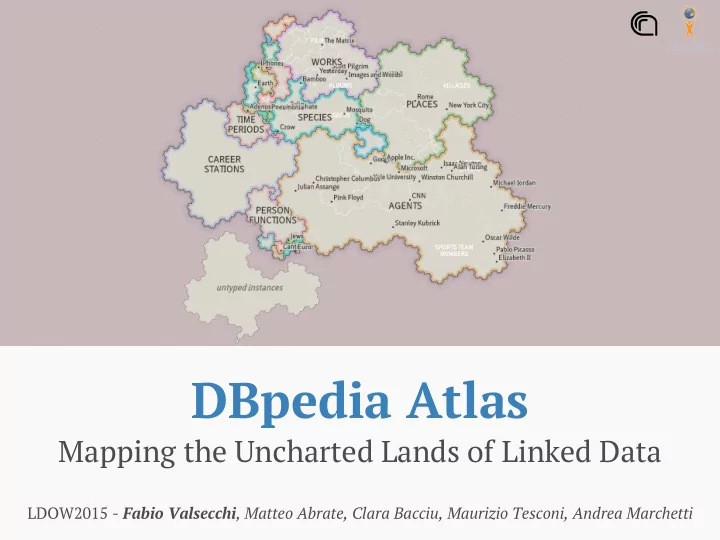

DBpedia Atlas Mapping the Uncharted Lands of Linked Data LDOW2015 - Fabio Valsecchi , Matteo Abrate, Clara Bacciu, Maurizio Tesconi, Andrea Marchetti
Motivation ● Users always ask “What is the dataset like?” ● Linked Data sets are difficult to make sense to non-experts of Semantic Web: ○ Content (Data) ○ Structure (Ontologies) ● Visualizing or exploring LD sets is difficult: ○ Volume ○ Complexity
LD visualization tools Applications like LODlive, RelFinder, DBpedia viewer, LOD Visualization , … feature some but not all of the following: ● description of a single instance ● exploration of small groups of instances ● presentation of a summary of the whole dataset None of them follows Shneiderman’s Mantra .
Visual Information-seeking Mantra “Overview first, zoom and filter, then details on demand.” Lead a user from an overview of the main features of a dataset to its tiniest details. ● Provide an overview that acts as an entry point of the dataset ● Allow to zoom and filter for focusing on specific parts of the dataset ● Give details on single instances
Use case The DBpedia knowledge base* ● 3 billion RDF triples ● More than 4 million instances ● A hierarchical ontology composed by 685 classes *[DBpedia - A crystallization point for the Web of Data]
Spatialization approach Gosper Hexagonal space-filling Treemap tiles curve* *[GosperMap: Using a Gosper Curve for Laying Out Hierarchical Data - Auber, D.]
Why a map? A map can leverage: ● innate visual perception abilities ● learned map-reading skills to attain a high level of efficiency in communicating features of large scale, complex structures.
Demonstration Video
Future Works ● Similarity: displace similar instances close together (inside the same region) ● “Cities”: implement an automatic system for ranking the importance of instances ● Level of detail: as the user zooms in, more content should be shown ● Additional functionalities: ○ Advanced search (SPARQL) ○ Path finding features (à la RelFinder) ○ ...
Thank you! Take a look at the application: http://wafi.iit.cnr.it/lod/dbpedia/atlas fabio.valsecchi@wafi.iit.cnr.it
Recommend
More recommend